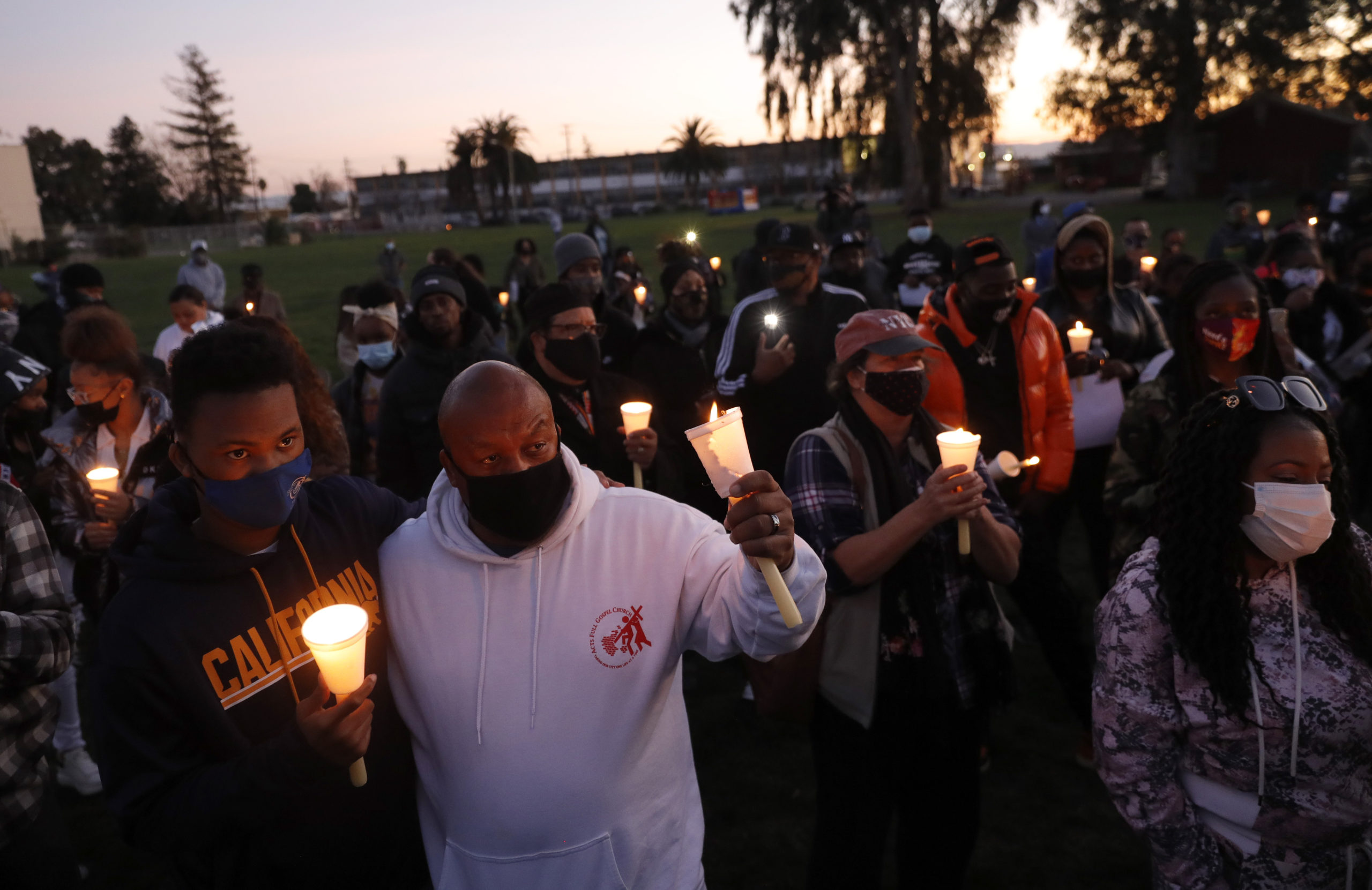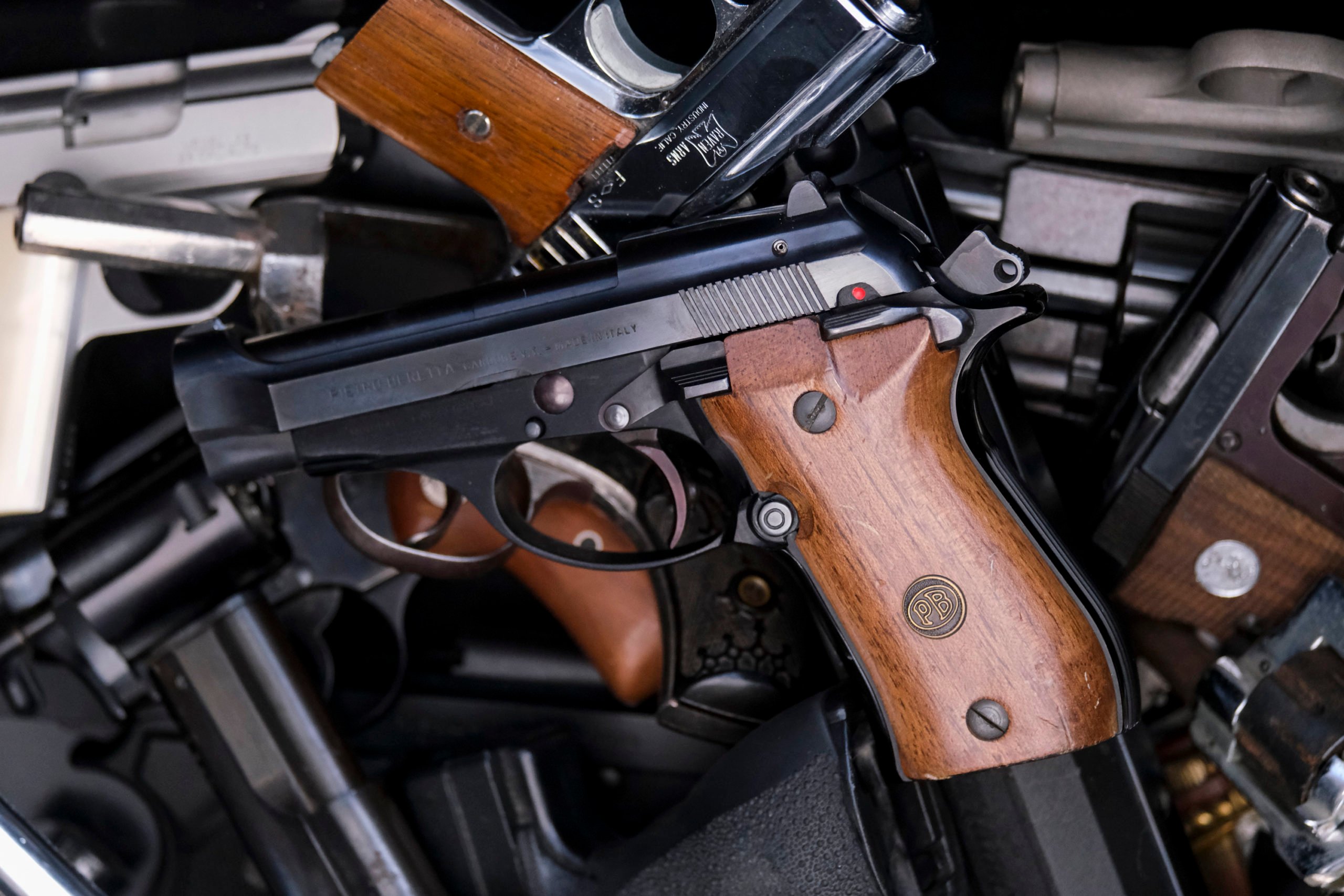Law enforcement agencies across California are failing to correctly log guns in a state firearms database, preventing thousands of weapons from being traced by the federal government. Experts say the lapse may be hampering police investigations and keeping gun smugglers in the shadows.
Every year, police and sheriff’s departments statewide recover thousands of firearms, each of which must be entered into the state’s Automated Firearms System (AFS). If officers know or suspect that a gun was used in a crime, they must tag it as evidence to indicate that a department is holding onto the weapon. Each of these firearms must also be identified as a “crime” gun, a designation that ensures information is routed to the federal Bureau of Alcohol, Tobacco, Firearms and Explosives for tracking.
Gun tracing is often the only way for authorities to identify the first legal owner of a firearm and who sold it, information that can connect the weapon to shooting suspects or trafficking rings. The process is considered so valuable that California legislators passed a law in 2001 requiring police departments to flag all recovered crime guns for tracing by the ATF.
But an investigation by The Trace and NBC Bay Area shows that between 2010 and 2020, more than 150 police agencies in California failed to flag more than half of their recovered crime guns for tracing in the database. State records show that, of those agencies, more than 20 designated no guns as crime guns at all.
In total, California agencies improperly entered more than 90,000 guns in the AFS over the last decade.
“Tracing is part and parcel of the basic investigative process,” said Jim Bueermann, a former Southern California police chief who is now a senior fellow at the National Police Foundation, a nonprofit focused on improving police work. “I can think of no legitimate justification or rationale for any agency that knows about firearms tracing not to do it.”
The San Bernardino County Sheriff’s Department logged more than 20,000 evidence guns between 2010 and 2020. It submitted fewer than half for tracing through the state system. In Modesto, police logged more than 4,300 evidence guns but tagged only 1,525 for tracing. The Sheriff’s Office in Fresno County logged some 3,000 firearms as evidence. The number it tagged for tracing: zero.
None of the departments responded to multiple requests for comment.
The California Department of Justice, the agency that maintains the state’s gun database, told The Trace and NBC Bay Area that guns classified as evidence should also be classified as crime guns. A spokesperson said the Justice Department has taken steps to ensure that police follow this rule. “The Bureau of Firearms annually sends letters to heads of law enforcement agencies notifying them of how many AFS entries of various types were made in the past year, and reminding them of mandated reporting requirements,” the spokesperson said by email. “These letters do not focus specifically on improper entries, but could be used by law enforcement agencies to identify reporting issues.”
The Justice Department also noted that the state Legislature has not prescribed penalties for agencies that log firearms incorrectly. “Any repercussions would need to be added to the law by the Legislature,” the department said.
Erik Longnecker, a spokesperson for the ATF, declined to comment on local agencies’ use of California’s firearms database, but he said the bureau would train any department seeking guidance on how and why to trace guns. “We encourage every agency to trace every firearm and to make use of the information that they get back from the system,” he said.
In some cases, departments may bypass the state’s gun database and trace guns directly with the ATF, although state records and interviews with dozens of officers suggest that doesn’t happen frequently. For instance, the Bakersfield Police Department recovered more than 6,400 guns over the last decade and tagged no crime guns in the state database. Records obtained from the department show that officers traced only 53 firearms directly with the ATF.
I can think of no legitimate justification or rationale for any agency that knows about firearms tracing not to do it.”
Jim Bueermann, former California police chief
A Bakersfield Police spokesperson, Robert Pair, said nobody at the department was familiar with the state process for initiating traces, but insisted the data was not essential. “There are cases where this data is important,” he said, “but it’s not that common.”
In 2020, California endured a 31 percent spike in homicides, and policing experts and former federal officials say that not tracing guns could hobble law enforcement’s ability to reverse that increase and plug trafficking routes that have armed droves of criminals.
“They’re not getting all the information that they need to solve crimes,” said Jill Snyder, a former ATF agent who investigated gun trafficking in the Bay Area. “It’s potentially a huge public safety threat.”
The homicide increase was especially sharp in Oakland, where 109 people were killed in 2020, a nearly 40 percent spike over the previous year. Already in 2021, that total has been surpassed.
Data from the state Justice Department shows that the Oakland Police Department recorded some 3,000 crime guns between 2010 and 2015 in the state database. Over the next five years, it logged just five.
An Oakland Police spokesperson said the department stopped using the state database in 2016 because of budget and staffing issues. The department submits its traces directly with the ATF, she said, and plans to resume using the state database next year.

Steve Lindley, who oversaw the AFS until 2018 and now works for the gun reform group Brady, said the apparent disregard for the database was alarming. “I know that departments are overworked, understaffed, and that their budgets suck,” he said. “But you still have to do your job.”
More than 8,000 American law enforcement agencies trace firearms through the ATF. Although police in California can use the Automated Firearms System to access information about crime guns that were sold in the state, an ATF trace is the only way for agencies to acquire details about the history of crime guns originally bought elsewhere.
In 2015, police in Los Angeles used gun tracing to solve the fatal shooting of a 30-year-old woman after the shotgun used in her killing washed up on a beach in Orange County. The salt water had stripped the weapon of fingerprints, but a trace led police to the man who had purchased it years earlier in Georgia. He was later convicted of first-degree murder.
Federal data shows that police in California recover at least 10,000 guns each year that were originally sold in Nevada, Arizona, and other states with weaker firearms regulations. That number is surely an undercount, given how many departments have failed to enter weapons into the AFS.
Tracking guns routinely helps law enforcement identify and dismantle gun trafficking networks. In 2016, ATF investigators traced more than 60 guns recovered in the Bay Area to a ring of Nevada gun buyers. The smugglers had spirited weapons to California in the luggage holds of Greyhound buses, then sold them on the underground market in Oakland. Guns linked to the trafficking group were recovered in connection to four attempted murders and three homicides.
As The Trace has previously reported, the ATF has for years struggled to get departments to trace guns, owing in part to officers forgetting to enter firearm information into the federal gun tracing portal, eTrace. In 2001, the agency partnered with the California Department of Justice to improve compliance. Under the agreement, every firearm designated as a crime gun in the AFS would be automatically routed to the ATF for tracing. Officers would need to enter each gun’s details only once.
Help us tell more stories like this.
The Trace is the only newsroom reporting on gun violence full-time. Your donation can help up dig deeper.
The California Legislature quickly enshrined the practice into law. A measure passed that same year required police departments and sheriff’s offices to log any gun that was illegally possessed, used in a crime, or suspected of having been used in a crime as a crime gun in the state database. In 2018, the Legislature set a seven-day deadline for all law enforcement agencies in the state to log recovered crime guns in the system.
Even when agencies entered guns in the state database correctly, The Trace and NBC Bay Area found, they often failed to use the results in their investigations. Federal records show that more than 100 California law enforcement agencies have never signed up for an account with eTrace, which would enable them to access trace results electronically and analyze them for trafficking trends. If an agency doesn’t have an eTrace account, it receives each trace as a paper report through the mail.
The Pomona Police Department logged more than 2,000 crime guns between 2010 and 2020, but it is not registered for an eTrace account. When asked by a reporter whether officers used trace reports mailed by the ATF in investigations, a department spokesperson said, “We are not familiar with this.”
Federal records show that the Long Beach Police Department, which logged 5,700 crime guns between 2010 and 2020, does have an eTrace account. However, when contacted by The Trace and NBC Bay Area, a department spokesperson, Richard Mejia, insisted that the agency was not registered and only received trace results in the mail. The information “is not [sent] in a timely manner and there is no consistency to it,” Mejia said in an email, adding that the results usually arrive after a case has already been resolved. The department, he added, “does not use the ATF Trace Data for leads in investigations.”

Snyder, the former ATF agent, said these sorts of lapses are “like getting a fingerprint match back and going, ‘Oh, that’s nice,’ and throwing it away.”
One reason police have struggled to use the state database is that the arrangement between California and the ATF did not make tracing an entirely hands-off affair, said Lindley, the former state Justice Department official. Officers still must remember to indicate that a gun is connected to a crime in order for its information to be routed to the ATF.
“It might be an education problem; it might be a staffing issue, but agencies aren’t putting the guns into the system like they should, and it’s affecting the overall data,” Lindley said. “It probably takes two minutes to get all the firearm data into the system properly, but it provides a vast amount of information back to the department.”
The Trace and NBC Bay Area found that some California agencies had incorporated the state’s tracing mandate into their internal policies, but still appeared lax about following it.
The manual for the Richmond Police Department contains an entire section that explains how gun tracing “can reduce criminal access to weapons as well as decrease gun related assaults, injuries, and deaths.” The section includes a detailed explanation of the state entry requirement, including a precise description of the process by which firearm information in California is transmitted to the ATF. Yet over the last decade, the department has identified less than 40 percent of its recoveries as crime guns, possibly leaving more than 1,000 guns untraced.
It’s like getting a fingerprint match back and going, ‘Oh, that’s nice,’ and throwing it away.”
Jill Snyder, former ATF agent
The Richmond Police Department did not respond to multiple requests for comment.
A spokesperson for the state Department of Justice said that it offers voluntary training for evidence technicians on how to enter information into the Automated Firearms System. The spokesperson added that similar training is not available for investigators, and said information about how to use trace data effectively would need to come from the ATF.
Some departments contacted by The Trace and NBC Bay Area were alarmed to discover that they had incorrectly entered firearms information into the database. The Merced County Sheriff’s Office had recovered more than 1,000 guns in the last decade. It flagged just one as a crime gun. Daryl Allen, the department spokesperson, said reporters’ questions made officers aware that staff had not complied with state law. Allen said the sheriff would work with the Justice Department to “train our personnel on the proper way of entering firearms into AFS.”
“[We] believe we will have the issue corrected in a timely manner,” Allen wrote in an email.
Despite the inconsistent use of gun tracing data in California, state leaders have moved to make it a focal point of their efforts to curb the surge in homicides. In October, Governor Gavin Newsom approved legislation requiring the California Department of Justice to publish annual reports that use data from the AFS to identify dealers responsible for large numbers of crime guns — which is considered a red flag for gun trafficking.

While the measure does not take steps to increase tracing among police, the bill’s author, state Assemblymember Kevin McCarty, said it would help law enforcement and policymakers restrict the flow of weapons into the criminal market. “If you look at the data, it’s a small percentage of bad-acting dealers who are supplying the majority of guns that end up in crimes,” the Sacramento Democrat said. “California needs to step up and make its own proactive efforts to address this problem at its source.”
But because the state’s data is unreliable, it will likely obscure the true scope of California’s gun trafficking problem. State legislators will be forced to make decisions about how to combat gun crime based on incomplete information, as will the ATF.
Meanwhile, departments across California are scrambling to contain a surge in recoveries of untraceable ghost guns. As The Trace and NBC Bay Area have previously reported, the weapons have become an appealing commodity for criminals eager to sidestep the state’s stringent gun regulations.
In 2020, the Newsom administration filed a lawsuit demanding that the ATF crack down on ghost guns, contending that these homemade, untraceable firearms posed a potent public safety threat because they could not be traced.
The inability to trace ghost guns back to particular buyers and sellers prevents law enforcement agencies from fully investigating crimes, “allowing reckless sellers and illegal traffickers to operate with near impunity,” the lawsuit stated. It added that tracing “provides critical information necessary to investigate and solve crimes.”

